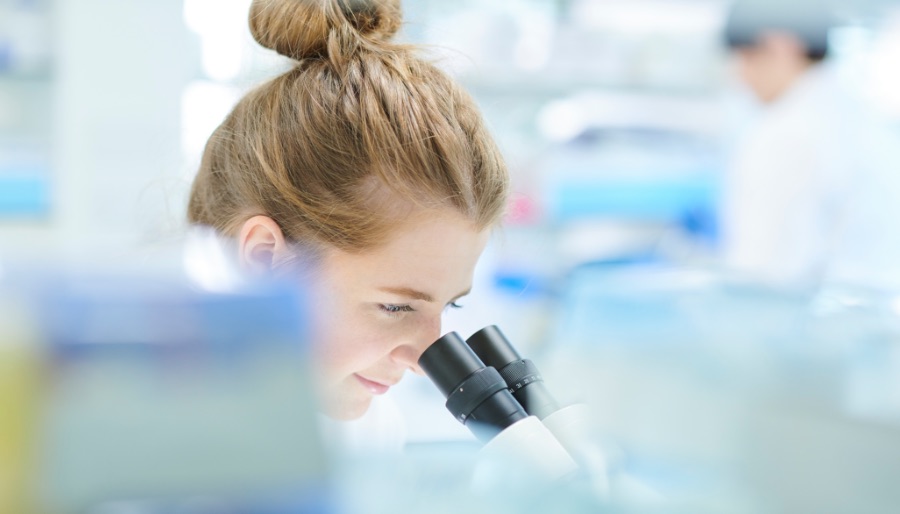益生菌是什么?
- 益生菌是一类经验证对宿主有益的活性微生物

益生菌是一类活微生物,足量食用益生菌与潜在的特定健康益处相关。含有活性微生物的产品必须在所记录CFU水平上具有可证明的、特定于菌株的临床效果,才能被称作益生菌。特定的益生菌菌株与健康益处相关,如免疫功能、胃肠道健康、女性健康和口腔健康等。
只有服用益生菌活体才可起到目标的健康益处,但随着时间的推移,产品中的活菌数量会随着细胞的自然死亡而减少。因此,产品上标注的菌落形成单位(CFU)必须是在“保质期”内存活的菌落形成单位(CFU),而不是生产当天的活菌数量,因为在生产日和保质期截止日之间,细菌数量很可能会减少。
益生菌定义
世界卫生组织(WHO)将益生菌定义为足量食用会对宿主有益的活性微生物1。许多食品和补充剂也含有活微生物,但只有经科学研究证明对健康有益的菌株才可以被称为“益生菌”。根据这个定义,益生菌菌株必须具有特异性、效价强度和可证明的临床效能。
泡菜和酸菜等发酵食品含有微生物且与健康益处有关,但它们不被视为益生菌,因为它们尚未确定“足量(或剂量)”是多少,且其健康益处尚未得到临床证明。

菌株水平特异性
益生菌是通过属、种、亚种和株来鉴别的。因为益生菌的临床效果与特定菌株直接相关。2例如,科汉森益生菌菌株LGG®️鼠李糖乳酪杆菌菌株主要与胃肠道和免疫功能有关,3,4,5,6 而GR-1TM 鼠李糖乳酪杆菌菌株主要与女性泌尿生殖道菌群有关。7,8
益生菌的效价强度
益生菌产品含有数百万到数十亿个活菌,每个活菌都可形成可见的菌落,而可见菌落可用于细菌计数。因为益生菌产品的效力与菌株息息相关,所以益生菌产品保质期结束时的菌落数须与该菌株临床试验时的菌落数相当。9,10由于菌落数会随时间推移而不断减少,因此产品标签上应注明保质期结束时的菌落数,而不是生产时的菌落数。
微生态失衡会引起健康问题
人类肠道微生态组成在人的一生中一直在发生变动,年龄、药物、饮食和疾病都可能导致肠道微生态发生失衡(失调)。11此外,分娩方式和抗生素的使用也会影响肠道微生物组的形成。12某些类型的益生菌可通过改善菌群失衡来给宿主带来不同方面的健康益处。
益生菌可为不同菌群带来益处
数十年来,人们在体外实验、体内实验和人体临床双盲试验中对益生菌进行了充分的研究。研究结果表明,其可为许多不同的健康领域带来益处。益生菌已被证实的作用方式包括:维持肠上皮屏障的完整性、13, 14维持健康的免疫应答、15, 16促进肠内分泌细胞的激素分泌、17支持有益代谢物的生成。18, 19以下举例说明益生菌对不同健康问题的益处(列举4个健康领域):
以“LGG®️鼠李糖乳酪杆菌菌株GG”为例,“乳杆菌”是“属”,“鼠李糖”是“种”,“GG”是“菌株”,“LGG®️”是科汉森生产的这一特定菌株的“商标”。
胃肠道健康
益生菌产品已被证实与胃肠道健康的益处相关。研究表明,补充含有特定科汉森菌株的益生菌产品,与增加肠蠕动缓慢的成人年的排便频率20,21,22和缓解婴儿肠绞痛相关23。益生菌的这些功效被认为是通过支持健康的胃肠道菌群结构和菌群功能而实现的23。
免疫功能
科汉森菌株与对婴儿和儿童的免疫功能支持作用相关。临床研究和科学文献表明,食用含有特定菌株的益生菌产品,与降低呼吸道感染的发病率、25减少持续3天以上呼吸道感染的次数、5显著减少患呼吸道病症的天数、5以及降低急性中耳炎的发病率相关。25
女性健康
临床研究和科学文献表明,科汉森菌株与维持健康的泌尿生殖道菌群、降低尿路感染、7降低外阴阴道念珠菌病26和细菌性阴道炎的发病率相关。8, 27, 28
口腔健康
对儿童进行的临床评估和微生物分析表明,LGG®️鼠李糖乳酪杆菌菌株与降低龋齿风险、降低牙菌斑和唾液中变异链球菌的浓度相关29,30。
在选择益生菌产品时,要特别注意产品中益生菌菌株的菌落数,以及该菌株在临床试验中被证实的益处。
更多有关科汉森菌株的信息,请点击此处。
LGG® and GR-1™是科汉森有限公司的商标。 TM代表科汉森长期使用、具有较高知名度但尚未在中国获得注册或已在申请注册过程中的商标,®代表科汉森长期使用、具有较高知名度并已在中国获得注册的商标。
免责声明:本文章的目的是提供有关益生菌的信息,并不表示文章中提到的任何物质可用来诊断、减轻、治疗、治愈或预防任何疾病。如果您正面临具体的医疗问题,请务必咨询医生或专业人士。本文引用的相关文件、数据或研究结果仅供参考,不构成对任何人的直接建议或指导。所引用的文献、资料或研究仅为作者的观点,并不代表科汉森的立场。如需转载、节选、链接或以任何其他方式引用本文章内容,请确保符合中国法律法规,科汉森对引用本文章内容所产生的任何法律后果不负法律责任。

参考文献 打开 关闭
- Hill C, et al. The International Scientific Association for Probiotics and Prebiotics consensus statement on the scope and appropriate use of the term probiotic. Nat Rev Gastroenterol Hepatol. 2014;11:506. (PubMed)
- McFarland LV, et al. Strain-Specificity and Disease-Specificity of Probiotic Efficacy: A Systematic Review and Meta-Analysis. Frontiers in medicine. 2018;5:124-. (PubMed)
- de Vrese M, et al. Probiotic lactobacilli and bifidobacteria in a fermented milk product with added fruit preparation reduce antibiotic associated diarrhea and Helicobacter pylori activity. J Dairy Res. 2011;78(4):396-403. (PubMed)
- Pärtty A, et al. Effects of Early Prebiotic and Probiotic Supplementation on Development of Gut Microbiota and Fussing and Crying in Preterm Infants: A Randomized, Double-Blind, Placebo-Controlled Trial. The Journal of Pediatrics. 2013;163(5):1272-7.e2. (PubMed)
- Hojsak I, et al. Lactobacillus GG in the prevention of nosocomial gastrointestinal and respiratory tract infections. Pediatrics. 2010;125(5):e1171-7. (PubMed)
- Hojsak I, et al. Lactobacillus GG in the prevention of gastrointestinal and respiratory tract infections in children who attend day care centers: a randomized, double-blind, placebo-controlled trial. Clin Nutr. 2010;29(3):312-6. (PubMed)
- Beerepoot MA, et al. Lactobacilli vs antibiotics to prevent urinary tract infections: a randomized, double-blind, noninferiority trial in postmenopausal women. Arch Intern Med. 2012;172(9):704-12. (PubMed)
- Petricevic L, et al. Randomized, double-blind, placebo-controlled study of oral lactobacilli to improve the vaginal flora of postmenopausal women. Eur J Obstet Gynecol Reprod Biol. 2008;141(1):54-7. (PubMed)
- Hoffmann DE, et al. Probiotics: achieving a better regulatory fit. Food Drug Law J. 2014;69(2):237-ii. (PubMed)
- Jackson SA, et al. Improving End-User Trust in the Quality of Commercial Probiotic Products. Front Microbiol. 2019;10:739. (PubMed)
- Aleman FDD, Valenzano DR. Microbiome evolution during host aging. PLoS Pathog. 2019;15(7):e1007727. (PubMed)
- Korpela K, de Vos WM. Early life colonization of the human gut: microbes matter everywhere. Curr Opin Microbiol. 2018;44:70-8. (PubMed)
- Seth A, et al. Probiotics ameliorate the hydrogen peroxide-induced epithelial barrier disruption by a PKC- and MAP kinase-dependent mechanism. Am J Physiol Gastrointest Liver Physiol. 2008;294(4):G1060-9. (PubMed)
- Chen L, et al. Lactobacillus rhamnosus GG treatment improves intestinal permeability and modulates microbiota dysbiosis in an experimental model of sepsis. Int J Mol Med. 2019;43(3):1139-48. (PubMed)
- Claes IJ, et al. Lipoteichoic acid is an important microbe-associated molecular pattern of Lactobacillus rhamnosus GG. Microb Cell Fact. 2012;11:161. (PubMed)
- Lebeer S, i. Functional analysis of Lactobacillus rhamnosus GG pili in relation to adhesion and immunomodulatory interactions with intestinal epithelial cells. Appl Environ Microbiol. 2012;78(1):185-93. (PubMed)
- Latvala S, et al. Potentially probiotic bacteria induce efficient maturation but differential cytokine production in human monocyte-derived dendritic cells. World J Gastroenterol. 2008;14(36):5570-82. (PubMed)
- Kang J-E, et al. A Novel Lactobacillus casei LP1 Producing 1,4-Dihydroxy-2-Naphthoic Acid, a Bifidogenic Growth Stimulator. Prev Nutr Food Sci. 2015;20(1):78-81. (PubMed)
- Russo M, et al. Lactobacillus fermentum CRL1446 Ameliorates Oxidative and Metabolic Parameters by Increasing Intestinal Feruloyl Esterase Activity and Modulating Microbiota in Caloric-Restricted Mice. Nutrients. 2016;8(7). (PubMed)
- Eskesen D, et al. Effect of the probiotic strain Bifidobacterium animalis subsp. lactis, BB-12®, on defecation frequency in healthy subjects with low defecation frequency and abdominal discomfort: a randomised, double-blind, placebo-controlled, parallel-group trial. Br J Nutr. 2015;114(10):1638-46. (PubMed)
- Uchida K, et al. Effect of fermented milk containing Bifidobacterium lactis BB-12 on stool frequency, defecation, fecal microbiota and safety of excessive ingestion in healthy female students. Journal of Nutritional Food. 2005;8:39-51
- Pitkala KH, et al. Fermented cereal with specific bifidobacteria normalizes bowel movements in elderly nursing home residents. A randomized, controlled trial. J Nutr Health Aging. 2007;11(4):305-11. (PubMed)
- Nocerino R, et al. The therapeutic efficacy of Bifidobacterium animalis subsp. lactis BB-12® in infant colic: A randomised, double blind, placebo-controlled trial. Aliment Pharmacol Ther. 2019. (PubMed)
- Taipale T, et al. Bifidobacterium animalis subsp. lactis BB-12 in reducing the risk of infections in infancy. Br J Nutr. 2011;105(3):409-16. (PubMed)
- Rautava S, et al. Specific probiotics in reducing the risk of acute infections in infancy--a randomised, double-blind, placebo-controlled study. Br J Nutr. 2009;101(11):1722-6. (PubMed)
- Martinez RC, et al. Improved treatment of vulvovaginal candidiasis with fluconazole plus probiotic Lactobacillus rhamnosus GR-1 and Lactobacillus reuteri RC-14. Lett Appl Microbiol. 2009;48(3):269-74. (PubMed)
- Vujic G, et al. Efficacy of orally applied probiotic capsules for bacterial vaginosis and other vaginal infections: a double-blind, randomized, placebo-controlled study. Eur J Obstet Gynecol Reprod Biol. 2013;168(1):75-9. (PubMed)
- Anukam K, et al. Augmentation of antimicrobial metronidazole therapy of bacterial vaginosis with oral probiotic Lactobacillus rhamnosus GR-1 and Lactobacillus reuteri RC-14: randomized, double-blind, placebo controlled trial. Microbes Infect. 2006;8(6):1450-4. (PubMed)
- Nase L, et al. Effect of long-term consumption of a probiotic bacterium, Lactobacillus rhamnosus GG, in milk on dental caries and caries risk in children. Caries Res. 2001;35(6):412-20. (PubMed)
- Glavina D, et al. Effect of LGG yoghurt on Streptococcus mutans and Lactobacillus spp. salivary counts in children. Coll Antropol. 2012;36(1):129-32. (PubMed)
- BB-12®是科汉森在丹麦和/或作者所在国的注册商标,®标识为引文原作者自行标注,不代表科汉森在中国注册商标的宣称。



